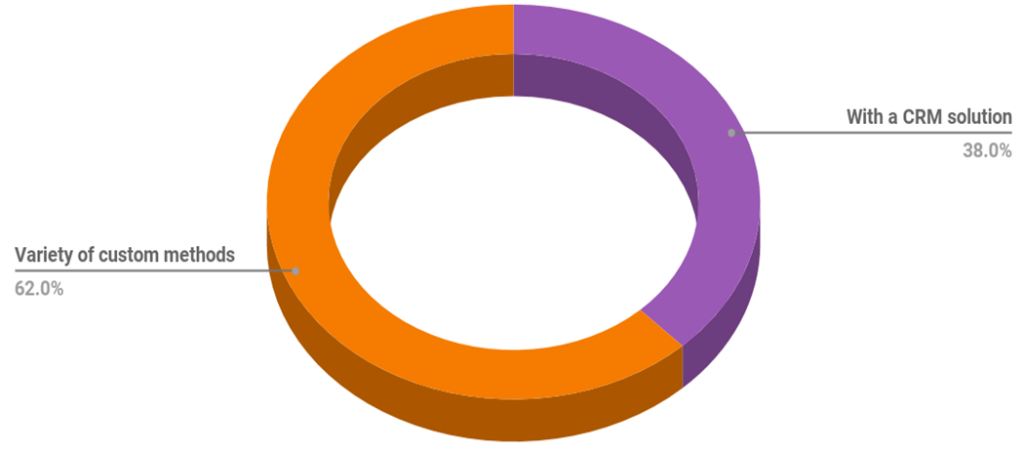
As an eBay seller, you’ve likely experienced the frustration of managing multiple support tickets across different accounts. Sorting through eBay messages, gathering data from various software tools and spreadsheets, and then replying—all while more tickets keep flooding in. We understand this pain because, as long-time eBay sellers ourselves, we too struggled with the lack of an efficient customer service solution tailored for eBay sellers.
This article explores how we developed Crazy Vendor, an automated customer support solution that helped an eBay seller cut ticket response time by 67%. The tool addresses the challenges of managing eCommerce customer service more effectively, saving time and reducing frustration.
A year ago, a team of software professionals and eBay experts began working on Crazy Vendor by directly consulting over 150 eBay sellers worldwide. The feedback was clear: customer service was a major bottleneck. Sellers expressed the need for a streamlined, automated system to handle support tickets, ultimately leading to the development of Crazy Vendor.

Table of Contents
How do eBay sellers manage their customer service?
Through extensive interviews with over 150 eBay merchants, we identified two main methods sellers use to handle customer service. Each method presents significant challenges that impact time efficiency and overall support quality.
1. Custom, Non-Automated Methods (62%)
The majority of sellers (62%) did not rely on any automated solutions for managing customer service. Instead, they used improvised and often ineffective systems such as:
- Chrome extensions with saved message templates
- Excel or Word tables and spreadsheets
- Manual handling of incoming support tickets
The most common issues reported in this group included:
- Wasted time switching between multiple eBay accounts
- Difficulty integrating data across various tools
- Challenges tracking and analyzing the customer service workflow
These fragmented processes led to excessive time spent on repetitive tasks and a lack of clear visibility into overall customer support performance.
2. CRM Systems with eBay Integration (38%)
A smaller group (38%) used one of the limited CRM (Customer Relationship Management) tools available for eBay sellers. However, most described their experience as frustrating due to:
- Unclear and outdated interfaces
- Buggy or weak integration with eBay’s platform
- Complex features that were difficult to navigate or apply effectively
For this group, the primary pain points included:
- Lengthy onboarding and training for new team members
- Underutilization of CRM functionalities due to a steep learning curve
- Business owners feeling they failed to maximize the system’s time-saving potential
In both cases, it was clear that the lack of a streamlined, intuitive solution significantly hindered the efficiency of customer service operations.

What is a CRM system?
Client Relations Management (CRM) refers to the complete set of interactions, strategies, and tools a business uses to manage and optimize its customer support operations. A CRM system typically centralizes customer information and historical communication, allowing businesses to manage support inquiries efficiently and maintain consistent, organized engagement with their clients.
In the context of eCommerce, especially on platforms like eBay, CRM systems play a crucial role in streamlining customer service. By consolidating messages, order details, and previous interactions in one place, sellers can reduce response times and improve the overall quality of customer service. However, for many eBay merchants, existing CRM tools often fall short due to poor integration, complexity, and limited usability tailored to the platform’s unique needs.
Goal: EASY TO USE eBay CRM software
With a clear understanding of the challenges eBay sellers face in managing customer service, we set out to build a solution from the ground up. Our goal was simple yet ambitious: to develop a professional, easy-to-use CRM software tailored specifically for eBay sellers—one that would minimize the time spent on customer service while enabling sellers to deliver responsive, personal, and professional support to their buyers.
To achieve this, we focused on two key principles. First, we prioritized simplicity in the user interface. We wanted every seller—regardless of technical background—to intuitively understand the system within seconds. To ensure this, we adopted Google’s Material Design framework, creating a clean, familiar environment that mirrors the usability of Google’s tools. Second, we committed to building features directly based on input from our users. From the earliest stages of development, sellers were actively involved in shaping the interface, defining workflows, and guiding the tool’s functionality. This collaborative approach ensured that every aspect of the CRM was designed with real eBay business needs in mind.
How we designed a time-saving tool for eBay customer service
After completing the initial development of Crazy Vendor, we set our sights on tackling two of the most time-consuming challenges eBay sellers face: searching for relevant data and manually typing responses. One of our early users shared that updating a customer on shipment status required opening multiple tabs—an Excel sheet with reply templates, the order page, and the product listing page. This process could take up to 15 minutes per response, significantly slowing down customer service operations. To address this, we focused on developing a streamlined solution that would reduce time spent on repetitive tasks and enhance overall efficiency.
Feature #1: Streamlining Responses with Quick Replies
In the first phase of development, we introduced an interface for saving message templates, allowing eBay sellers to quickly paste them into customer responses. This simple yet effective feature freed users from manually typing the same messages or copying text from Excel sheets or Word docs. We aimed for a basic, user-friendly feature that would improve over time based on user feedback. Sellers quickly embraced this tool, adding their own custom templates for rapid responses.
However, as usage grew, we noticed the need for further improvement. We received feedback that searching for the relevant quick reply still took too long. To address this, we added a search function, allowing sellers to find the appropriate template with ease. Additionally, we implemented the ability to group replies into dynamic categories, making it even more efficient to locate and use the right response.
Feature #2: Automating Information Insertion with Smart Tags
While the Quick Reply feature was a significant improvement, we identified another issue that was still slowing down eBay sellers—having to juggle multiple windows and tabs to gather all the necessary data to respond to inquiries. For example, one of our users had to open an Excel spreadsheet for templates, the eBay order page, the courier’s tracking page, and the product manufacturer’s website to pull relevant information. This cumbersome process was clearly a nightmare.
Recognizing this challenge, we introduced Smart Tags in the Quick Reply system. With Smart Tags, relevant order information is automatically populated into the message template, allowing sellers to respond to customer tickets in seconds. This feature dramatically reduced response times—from 6.2 minutes per ticket to just 2.5 minutes on average.
After rolling out this enhancement, we received excellent feedback. One of our users, who previously spent 31 hours a month handling 300 inquiries, was now able to reduce his time spent on customer support by over 63%. This not only saved time but also allowed him to focus more on growing his eBay business.
By continually refining our approach based on user feedback, Crazy Vendor’s CRM for eBay sellers became a true time-saver, making customer service faster, easier, and more efficient.

Conclusion: Revolutionize Your eCommerce Business with Efficient Customer Service
Managing customer service can be one of the most time-consuming aspects of running an eCommerce business, especially for eBay sellers. If you are constantly juggling between multiple data sources, switching between eBay accounts, and spending hours answering repetitive inquiries, it’s time to consider automation. By leveraging a CRM like Crazy Vendor, you can streamline your customer support processes, reduce response times, and provide a more professional and efficient service to your customers.
Crazy Vendor’s tools, such as the Quick Reply feature and Smart Tags for automated information insertion, are specifically designed to reduce the time spent on routine tasks and help you manage multiple support tickets seamlessly. With this system, eBay sellers can cut down on the hours spent per ticket, allowing more time for business growth and customer engagement.
Customer service is the backbone of eCommerce success, and with Crazy Vendor’s innovative CRM, you can handle customer inquiries efficiently while improving overall customer satisfaction. Make customer service your competitive edge—automate your process with Crazy Vendor and elevate your eCommerce business to the next level.










